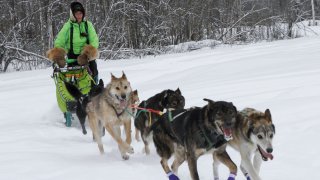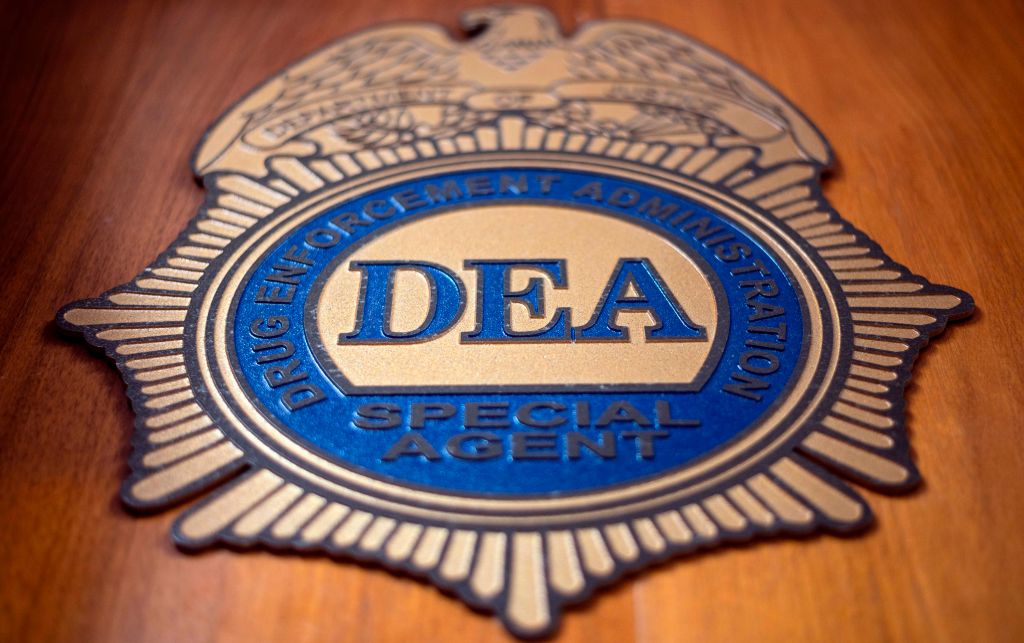
The Iditarod, the annual sled dog race celebrating Alaska's official state sport, is set to get underway Saturday with a new focus on safety after five dogs died and eight were injured in collisions with snowmobiles while training on shared, multi-use trails.
For the first time, mushers who line up for the ceremonial start in Anchorage will have the chance to snag light-up, neon harnesses or necklaces for their dogs before they begin the days-long race that takes the dog-and-human sled teams about 1,000 miles (1,600 kilometers) over Alaska’s unforgiving terrain.
Watch NBC6 free wherever you are
The 38 mushers will trace a course across two mountain ranges, the frozen Yukon River and along the ice-covered Bering Sea. In about 10 days, they will come off the ice and onto Main Street in the old Gold Rush town of Nome for the last push to the finish line.
Mushers always have contended with Alaska's deep winter darkness and whiteout conditions. But the recent dog deaths even while training have put a focus on making the four-legged athletes easier to see at all times. Mushers typically wear a bright headlamp for visibility, but that doesn’t protect lead dogs running about 60 feet (18 meters) in front of the sled.
Get local news you need to know to start your day with NBC 6's News Headlines newsletter.
“I can’t make snowmachiners act responsibly, it’s just not going to happen,” said Dutch Johnson, manager of the August Foundation kennel, which finds homes for retired racing sled dogs. “But I can help make dogs more visible.”
Two dogs were killed and seven injured in November on a team belonging to five-time Iditarod champion Dallas Seavey on a remote Alaska highway used as a training trail in the winter. It has recently become more popular with snowmobilers, bikers and other users, making it more dangerous for dogs.
Seavey said in a social media post that the snowmobile was heading in the opposite direction at about 65 mph (105 kph) when it slammed into the lead dogs on the team. The snowmobile driver was later cited for negligent driving.
U.S. & World
In December, musher Mike Parker was running dogs for veteran Iditarod competitor Jim Lanier on the Denali Highway when a snowmobile driven by a professional rider struck the dog team. Three dogs died and another was injured. The driver, Erik Johnson, was testing snowmobiles for his employer, Minnesota-based manufacturer Polaris, and both were cited for reckless driving.
Julie St. Louis, the co-founder and director for the August Foundation, is close to the Lanier family and knew the dogs involved. When brainstorming with Johnson, they decided to use the nonprofit foundation to help outfit the dogs with harnesses and necklaces.
“It was one way we could step up and do something that was still within our mission, because we're all about keeping the dogs safe,” she said.
The August Foundation has since secured an $8,500 grant from the Polaris Foundation and raised another $2,500 to buy 400 light-up harnesses, which were handed out to mushers at sled dog races in Fairbanks and Bethel earlier this winter.
The harnesses burn with bright neon-like colors that help illuminate the dogs in the darkness of the Alaska winter and pierce the clouds of snow sometimes kicked up by snowmachines, what Alaskans call snowmobiles.
They are now accepting donations to outfit as many dog teams as possible. Providing each team with four harnesses or lighted necklaces and one illuminated vest for the musher costs $120. A separate effort, called Light Up the Lead Dogs, is raising money to buy lighted collars for dogs.
In each of the accidents, Johnson said the snowmobile that hit the dogs was riding behind another snowmobile, which obscured visibility by kicking up snow.
"What I’ve witnessed with these harnesses is they make a halo effect in that dust,” Johnson said. “So they do give you some warning of where the lead dogs are.”
Jeri Rodriquez, the vice president of the Anchorage Snowmobile Club, said the multiuser trails are getting busier and all users need to do all they can to be seen.
Johnson will hand out the lighted harnesses Saturday at the Iditarod's ceremonial start in Alaska's biggest city. The fan-friendly event includes a musher taking an auction winner in their sled over about 11 miles (18 kilometers) of trail. The race's real start comes Sunday in Willow, about 75 miles (121 kilometers) north of Anchorage.
The dog deaths are the latest pressure point for the Iditarod, which began in 1973 and has taken hits in recent years from the pandemic, climate change, the loss of sponsors and the retirement of several big-name mushing champions with few to take their place.
The ranks of mushers participating this year dwindled even more last month as accusations of violence against women by two top mushers embroiled the Iditarod. Both were initially disqualified officially for violating the race’s conduct rules. One was reinstated later but wound up scratching because he had leased his dogs to other mushers and could not reassemble his team in time.
Three former champions remain in the race: 2019 champion Pete Kaiser, defending winner Ryan Redington and Seavey, who is looking for a record-breaking sixth championship.



